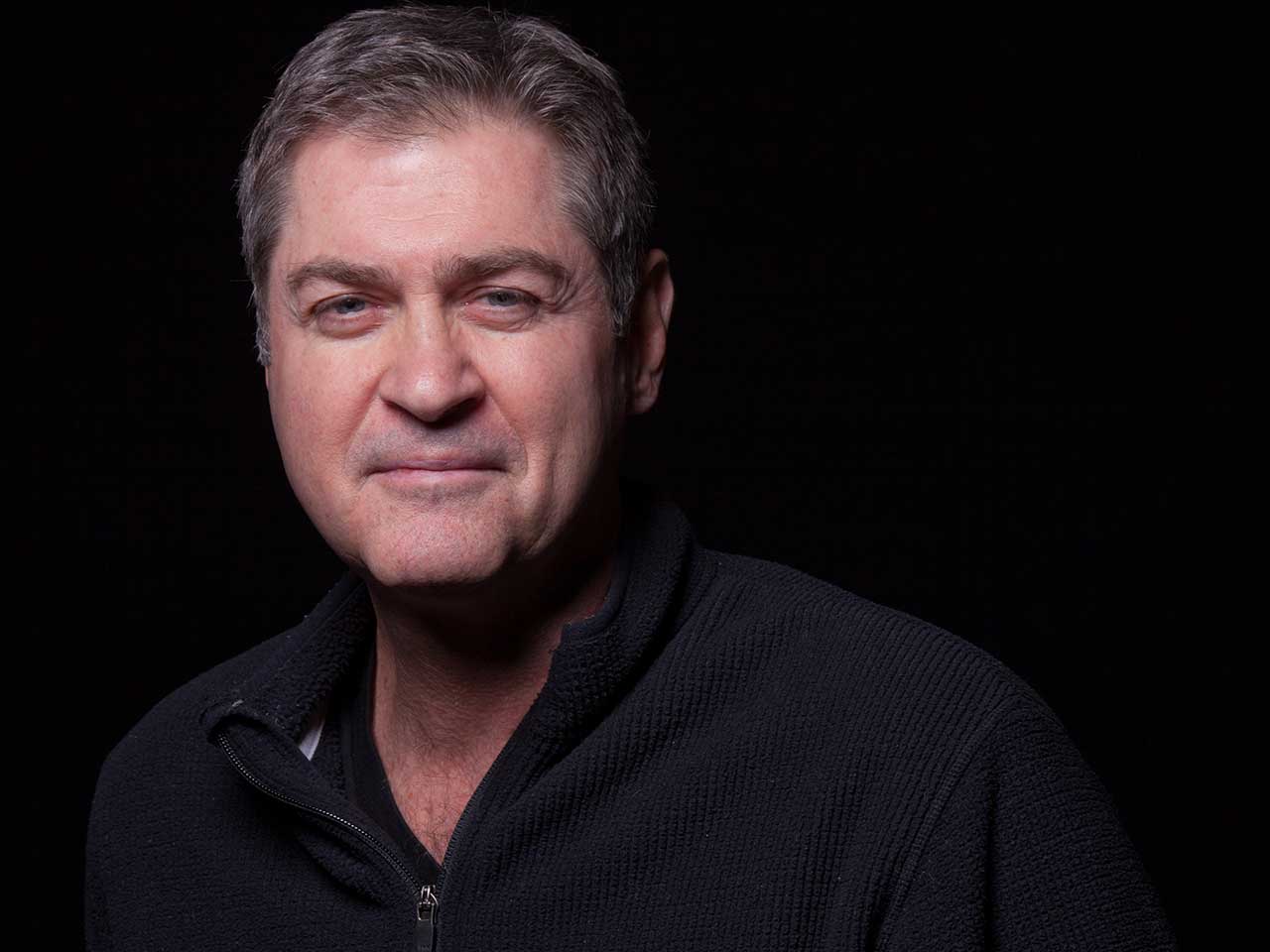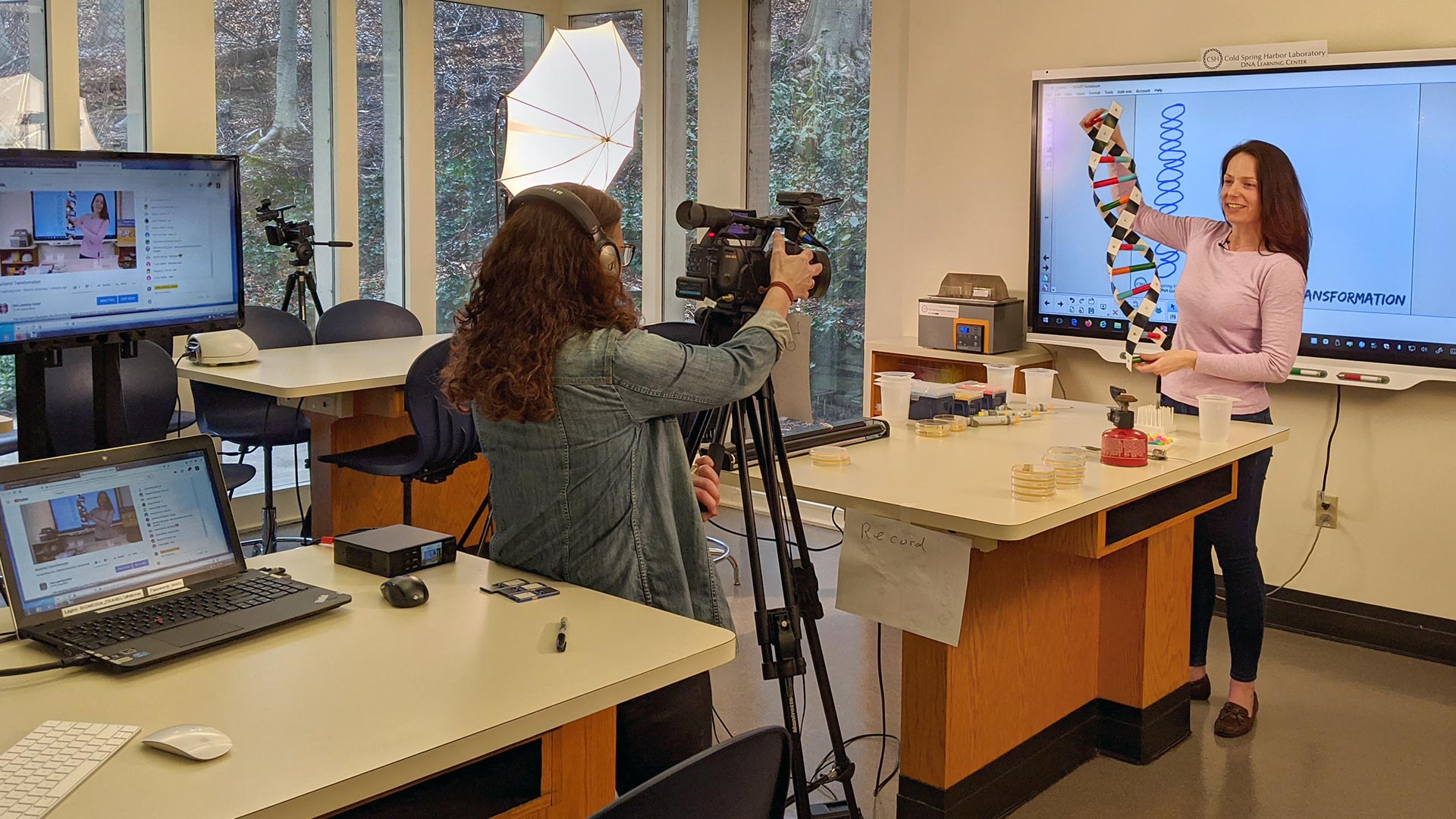The DNA Learning Center (DNALC) is the first and largest science center devoted entirely to public genetics education. Since 1988, DNALC educators have developed and delivered hands-on lab experiences to more than 670,000 students in the New York metropolitan area.

As the COVID-19 pandemic closed schools everywhere, DNALC educators jumped into action to help sequestered students, teachers, and families finish out the school year. The long-term commitment that DNALC has made to making the latest advancements in genetics understandable and accessible to the public has prepared this CSHL division to expand its reach even as it faces the challenges of the COVID-19 pandemic. This is how DNALC founder and Executive Director David Micklos is setting the course for the future:
“COVID-19 pandemic is an existential threat to cultural and social institutions like museums and science centers, including the DNA Learning Center. We all have to prepare for living with the threat of pandemic in the future and think about how we are going to survive in a different kind of world.” Micklos continues:
“Luckily, we’ve always been an institution that projected beyond our walls. Even though many people know us best for the things we do here locally, where they perceive that mainly students come here, in fact, a third of the exposures that students have to doing labs are in their schools.”
“About 10,000 of the 30,000 students that we do labs with each year are getting DNALC labs in their own classrooms,” explains Micklos. “So, we already have a model where we can potentially go to a school that may have less money for field trips, or can’t pay the most expensive part of coming to a DNALC facility, which is the cost of the bus. We’ve been doing offsite teaching since the 1990s, and we know how to do it.”
As a result of the COVID-19 pandemic, the DNALC is now thinking about variations on its off-site lab experiences. Micklos’ plan “is to offer a variety of ways that we can interact in real-time doing real experiments with lots of kids. Luckily we have the ability to use mobile footlockers to send equipment and reagents around because we’ve been doing it since the 1980s and doing more than anybody in the world.”
“The DNALC staff has been very good at adapting that philosophy,” he says. In March, as schools shut down, his team began hosting live internet programs doing virtual labs aimed to help middle and high school students finish out the school year. “We found out pretty fast that we weren’t going to have much of a live audience because the schools weren’t really quite ready for it.” Instead, DNALC found its greatest impact came from posting videos to YouTube, with viewership more than doubling over the same time last year. New subscribers and the amount of time that visitors are spending with its on-line materials has tripled.
“Now we are planning for the summer, assuming that we will not be able to have students at the DNALC facilities,” says Micklos. “We’re planning to deliver summer camp lab experiences virtually. This means that we’re going to have local parents pick up kits of supplies their kids can use at home. We’ve also reconfigured some of our experiments so that they can be done with household items.”
This approach is not only for application locally. As Micklos is thinking, “in developing these virtual yet quite involved hands-on experiments, we’ll actually be able to deliver these to an audience that is around the U.S. and even worldwide because if we can ship a modest set of reagents and supplies to participants, anyone can follow along virtually from almost anywhere. That’s what we’re really trying to develop, regardless of whether we will be able to return to our regular way of operation where we do most things here on-site.” The beta test for this is happening right now in Suzhou, China where DNALC has licensed its methods and technologies.
“In Suzhou, 1800 children will be doing a rather sophisticated experiment that links your genetic makeup to your ability to taste a bitter substance. The project is basically deploying a footlocker of equipment to schools and an expert instructor to classrooms. This is particularly exciting because it’s happening in China, where hands-on experiments in the classroom are not common practice,” explains Micklos:
Micklos expects that “about two-thirds of the students who will be served by the new Brooklyn facility (pdf) will be from racial groups that are underrepresented in the sciences. That’s predominantly African Americans and Hispanic Americans. Most of the students will come from disadvantaged backgrounds, meaning that at some point in their school career they received free or reduced-cost lunches. Brooklyn is one of the places that has suffered the most from COVID-19. The area deserves a break and the students there deserve an intellectual break.”
“Luckily, the DNALC has been a place that has always looked outward,” argues Micklos. “We’ve always offered courses to students and teachers in places around the world. We know how to pack equipment and carry it anywhere. We know how to interact with different kinds of people. We have plenty of resources on the Internet. So, in a sense, we’ve tried to be fearless about science education and this is a time when being fearless is quite helpful.”
Written by: Dagnia Zeidlickis, Vice President, Communications | zeidlick@cshl.edu | 516-367-8455
